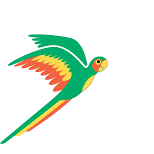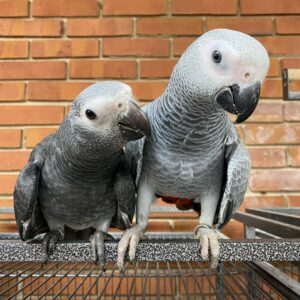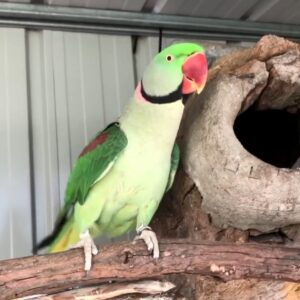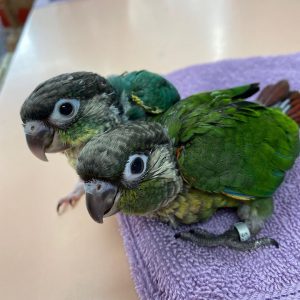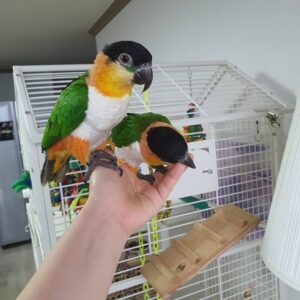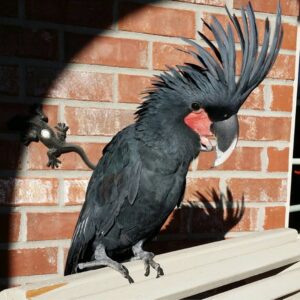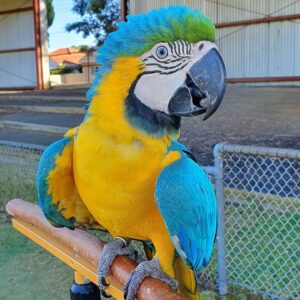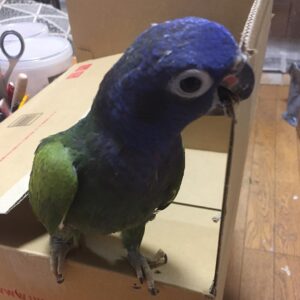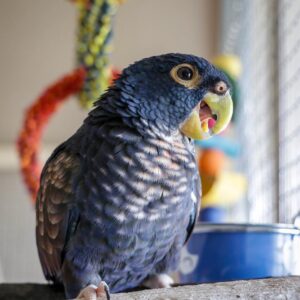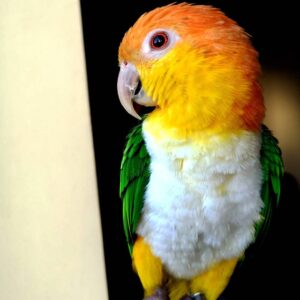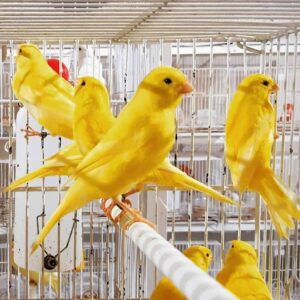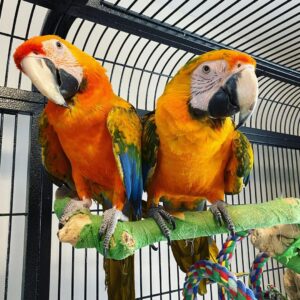Parrots for sale
Parrots for sale
Parrots for sale,parrots are some of the most spectacular and intriguing birds in the world! Due to their intelligence and highly social nature, parrots also have the ability to make wonderful pets. Given proper training and care, parrots can make excellent companions due to their desire to live as part of even a human flock*.
Parrots are a very diverse group of birds that can vary dramatically in size and color. For example, parrots range in size from the smallest Buff-faced Pygmy Parrot of New Guinea (3-4 inches) to the largest parrot, the Hyacinth Macaw of South America (40 inches).
Parrots live in a variety of habitats ranging from hot, humid rain forests to alpine mountains! They also have wide variations in their diets and nesting habits.
whether you are looking for a good pet parrot or an aviary companion, there are many different types of parrots to choose from on our website. There are about 372 parrot species from around the world.
Parrot types come in a wide variety of size, color, behavior, temperament, and ability to talk. Many of the best known parrots consist of several species in closely related genera, like the largest parrots, the macaws, as well as groups of medium to small parrots. These parrot types are readily recognizable, but because each group contains a number of bird species, their bird guides are in the following sections.
Some Characteristic features of parrots for sale
Characteristic features of parrots include a strong, curved bill, an upright stance, strong legs, and clawed zygodactyl feet. Many parrots are vividly coloured, and some are multi-coloured. Most parrots exhibit little or no sexual dimorphism in the visual spectrum. They form the most variably sized bird order in terms of length. The most important components of most parrots’ diets are seeds, nuts, fruit, buds, and other plant material. A few species sometimes eat animals and carrion, while the lories and lorikeets are specialised for feeding on floral nectar and soft fruits. Almost all parrots nest in tree hollows (or nest boxes in captivity), and lay white eggs from which hatch altricial (helpless) young.
Parrots, along with ravens, crows, jays, and magpies, are among the most intelligent birds, and the ability of some species to imitate human voices enhances their popularity as pets.
Types of parrots we have for sale
Amazon Parrots
African Grey Parrots
Macaws
Cockatoos
Conures
Parakeets
Cockatiels
Lovebirds
Lorikeets
Pionus Parrots
Caiques
How to care for parrots
A cage provides parrots with a retreat that they know is their territory in your home. It also assists in meeting your parrot’s needs, such as controlling lighting; parrots ideally need 12 hours of daylight and 12 hours of darkness.
The size of the cage varies by species. All parrots need a cage that allows them to spread their wings freely in the fully accessorized cage. Species with long tails need cages that are tall enough to accommodate the tail length. Did you catch the phrase fully accessorized? You need to furnish your feathered friend’s “bird cave.” Research the best cage material for your parrot’s species.
The Merck Veterinary Manual offers the following general guidelines for size: 20 x 20 x 30 inches for budgies, cockatiels, lovebirds, or parrotlets; 36 x 24 x 48 inches for conures, Poicephalus, caiques, miniature macaws; 40 x 30 x 60 inches for African grey parrots, Amazon parrots, and small cockatoos; 48 x 36 x 66 inches for macaws and large cockatoos. Bar spacing ranges from 0.5 inches to 1.5 inches for the smallest to largest species. Keep in mind that these suggested sizes are minimum for a single bird, and a bigger cage is always better! If you choose to keep multiple parrots, be prepared to offer a cage for each. Sharing a cage usually only works for the same species, and even that isn’t a guarantee that birds will get along. Never house birds together that show any aggression toward each other.
Keeping the cage clean is critical to your parrot’s health. Get into a regular routine of daily tasks like changing out paper and cleaning dishes and water bottles and weekly and monthly tasks like toy rotation and deep cleaning.
Parrots for sale,groom themselves, but they need some help from you. Provide the opportunities for bathing, be it hanging out in the bathroom while you shower or misting water above their head. Turn on the shower and see if your feathered friend wants to check it out or splash in the sink with the faucet on. Besides bathing, other regular grooming your parrot might need includes beak trims, wing trims, and nail trims. Consult your avian veterinarian for recommendations on these for your parrot.
Feeding of parrots
Eating like a bird means different things to different species. Parrots are mostly known for eating seeds, nuts, fruit, and vegetables, but most are omnivores rather than herbivores. And some, namely the lory, mainly eat nectar. Some species are more prone to vitamin deficiencies and some are prone to obesity. For variety, other healthy, balanced Lafeber foods include Avi-Cakes, Fruit Delight Avi-Cakes, Gourmet Nutri-Berries, Pellet Berries, and Senior Bird Nutri-Berries. For a treat, try Popcorn Nutri-Berries.
In addition to a balanced diet, parrots enjoy eating some fresh foods daily. These are snacks, so keep portions balanced for the size of your bird. Berries, bananas, leafy greens, and squash are some of the healthy foods safe to feed parrots. Some foods you might consider healthy are actually bad food for birds, so do your homework and consult your avian veterinarian about any foods you doubt the safety of for your bird.
Where to eat might be as important to some birds as what to eat. Cockatiels, for example, are ground foragers and would likely prefer their food served on the floor of their cage. Find out the preferred eating style of your parrot’s species.
Care
A cage provides a safe haven for parrots in your home that they recognize as their territory. It also helps you meet your parrot’s needs, such as controlling lighting; parrots require 12 hours of daylight and 12 hours of darkness.
The size of the cage varies depending on the species. All parrots require a fully equipped cage that allows them to spread their wings freely. Long-tailed species require cages that are tall enough to accommodate the length of the tail. Did you notice the term “fully accessorized”? You must furnish your feathered friend’s “bird cave,” so do your homework on the best cage material for your parrot’s species.
Speech and Sound of different parrots
One of the most endearing traits of parrots for many people is their ability to talk or mimic noises. Vocal ability varies among species, some are loud, others more quiet; some can learn to speak a human language, while others might only speak bird.
Showing 1–12 of 52 results
-
-
$550.00 – $1,200.00
-
-
-
$600.00 – $1,300.00
-
$3,000.00 – $7,000.00
-
$1,000.00 – $2,250.00
-
$700.00 – $1,600.00
-
$900.00 – $2,300.00
-
-
-
$1,250.00 – $3,000.00
